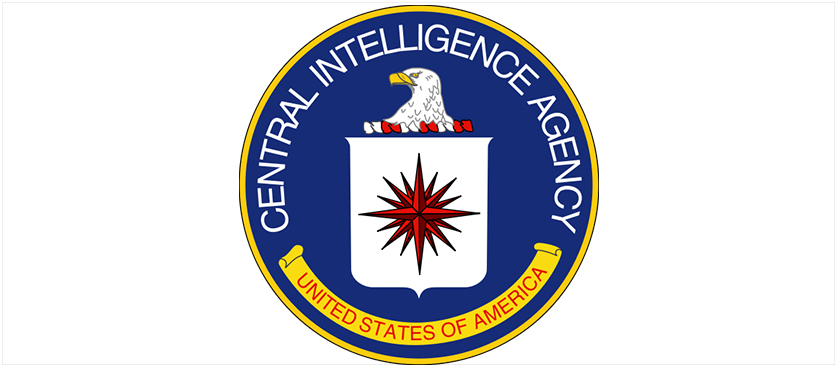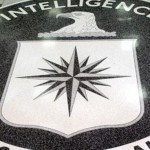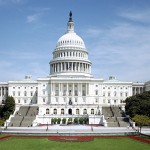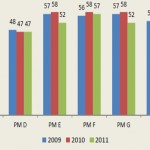CIA: Improving the analytic performance
The CIA was established by the National Security Act of 1947 as an independent agency, being charged with coordinating the U.S. intelligence activities, as well as evaluating and disseminating intelligence affecting national security. The CIA, the first line of defense, manages to accomplish what others cannot and go where others cannot. Briefly, they collect information that reveals potential threats, plans and capabilities of their adversaries, providing thus the basis for decision making and actions.Moreover, they produce timely analysis which provides insights, warning and opportunity to the President and decision makers charged with protecting America’s interests. Furthermore, they conduct covert action under the President’s direction in order to preempt threats and attain the U.S. policy objectives.
Service, Integrity, Excellence. These are the core values of the Agency. Country comes first and the Agency comes before self. The highest standards of conduct are imposed; they reflect on their performance and learn from it.
Organization of the CIA
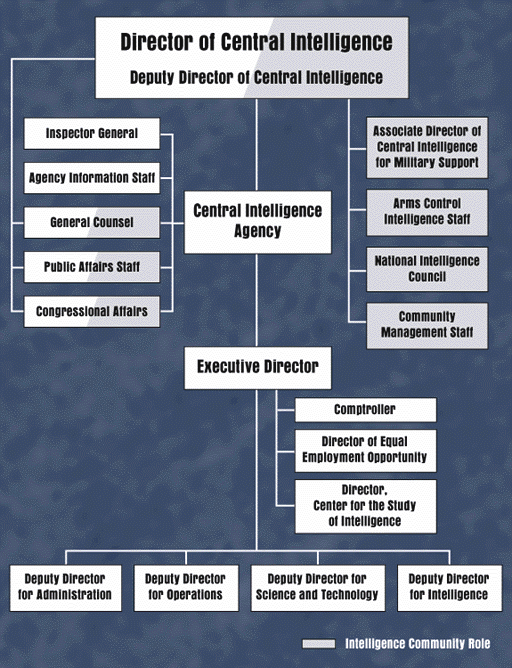
From the paper ‘Preparing for the 21st Century: An Appraisal of U. S. Intelligence’ (by Brown, H. and Rudman, W.B.)
The Agency is divided into four major divisions, each division being headed by a Deputy Director:
- The Directorate of Operations (DO) – collects foreign intelligence from human sources (also called ‘assets’) around the world in order to conduct covert actions programs.
- The Directorate of Intelligence (DI) – is formed out of analysts who assess foreign events and individuals based on the information collected by the DO, and by other agencies as well.
- The Directorate of Administration (DA) – provides administrative support for the entire Agency.
- The Directorate of Science and Technology (DS&T) – deals with technical collection programs and provides technical support to the DO.
All the Deputy Directors respond in front of the Director of Central Intelligence (DCI, and in his absence, to the Deputy Director – DDCI). The DCI, the statutory head of the CIA and of the Intelligence Community, spend most of his time managing the CIA.
Criticism of the CIA
A series of reports have been written over the past 50 years of CIA history, evaluating analytic performance and making recommendations for changes in priorities and tradecraft. These ‘post-mortem reports’, as they’ve been called, have been issued by Agency leaders and components, as well as by Congressional Committees, commissions and non-governmental organizations that were concerned with the CIA’s overall performance. After the ‘90s, their number increased, because of charges of specific failures and also because the post-Cold war period generated new challenges.
The recent post-mortem reports have helped the leaders of Directorate of Intelligence to examine both current doctrine and practices as critical as possible, addressing thus some of the identified challenges. One of the most important challenges faced by DI is that of establishing priorities among the competing use of analytic resources (e.g. current trend reporting vs. customized actions vs. in-depth studies).
Setting Analytic Priorities
In recent years, the DI has promoted measures that would address the prioritization issues regarding the analytic resources. Since the mid ‘90s, one of the major concerns has been the codification and development of qualifications for analysts in several discipline areas of analysis (economics, military and leadership, for instance), as the analyst expertise has been considered to have slipped below a satisfactory level, both on national security topics as well as on specific issues – the focus of the critique. This was due to a decrease in the analysts’ number, and to a lower experience level than previously, being more likely to be engaged as analytic generalists than being trained as substantive specialists. Moreover, the importance of hard target issues (counter-terrorism, and combating organized crime and narcotics trade) was emphasized, featuring operational and action-oriented analysis. Because analysts were much more thinly deployed to follow regional and country political, military and economic developments, the DI faced a great disparity in actions. As part of the DI Strategic Plan, training courses for the identified fields of analytic specialization were expanded and incorporated into the curriculum of the Sherman Kent School for Intelligence Analysis, after 2000, when it was founded. In addition, they tracked the analysts’ performance using professional metrics in order to better observe their improvements. Furthermore, analysts were offered the possibility to get posted abroad in order to gain foreign ‘ground truth’, to acquire more experience.
The terrorist attacks of 9/11 led to a large-scale shift of DI resources into counter terrorism efforts, with an emphasis on analytic support of tactical warning, collections and operations. Although the plan to expand the analytics skills remained intact, others were put on hold.
However, as recent trends indicate, DI analytic and resource priorities can change over time due to external circumstances and to new directions in leadership’s strategic planning. Of course, there are other concerns which have to be addressed, as ‘crime never sleeps’.
References:
- Davis, J. (2002), Improving CIA analytic performance: DI analytic priorities, Occasional Papers, Volume 1, Number 3, The Sherman Kent Center for Intelligence Analysis
- The Commission on the Roles and Capabilities of the United States Intelligence Community (1996), Preparing for the 21st Century: An appraisal of U.S Intelligence
- CIA (2007), CIA Vision, mission & values

Tags: Government - Federal, Government performance, Performance in USA, Performance Measurement

